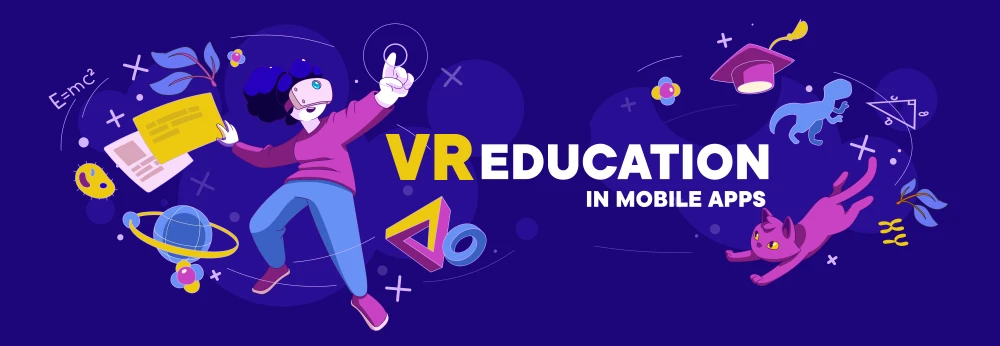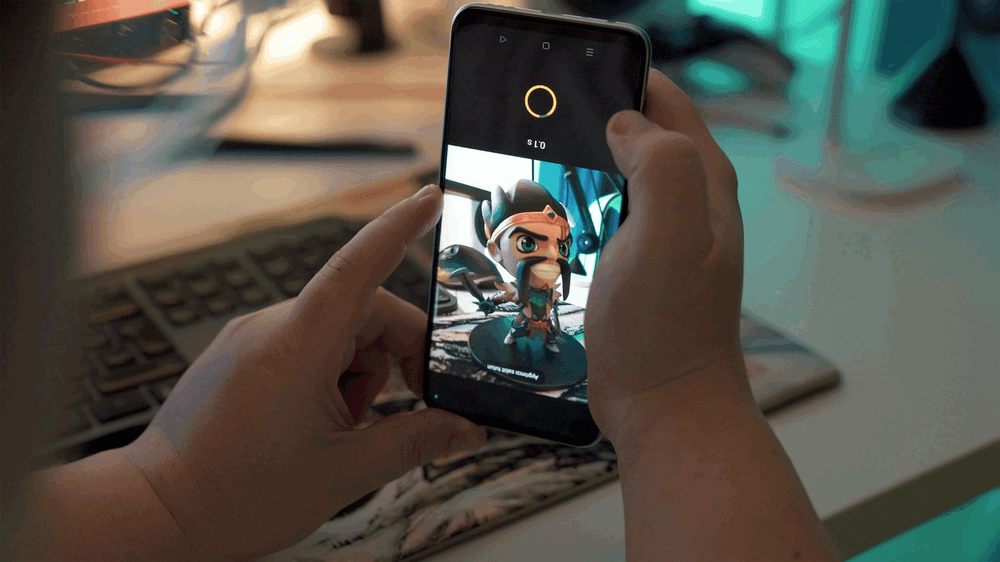.webp?2025-12-17T15:00:29.367Z)
Spotify Wrapped ideas make stats lovable

The Role of Augmented Reality in Mobile Education Apps
Mark Polskii
Author @ InAppStory
Imagine dissecting a frog on your desk, watching the Colosseum rise before your eyes, or traveling through the human body - all from your smartphone or tablet. This isn't science fiction; it's the exciting potential of Augmented Reality (AR) in mobile education apps.
AR overlays digital information onto the real world, creating an interactive learning experience that transcends the limitations of traditional textbooks and classroom settings. As mobile learning continues to grow in popularity, AR apps are emerging as a powerful tool to transform education, making it more engaging, accessible, and personalized than ever before. This article explores the role of AR in mobile education apps, highlighting its benefits, showcasing real-world examples, and discussing the exciting future it holds for learners of all ages.
The Benefits of AR in Mobile Education Apps

A. Immersive Learning
Traditional textbooks and lectures often struggle to bring complex concepts to life. Students may find it difficult to visualize abstract ideas or grasp the scale and intricacies of real-world objects. This is where AR shines. AR mobile education apps create an immersive learning experience, allowing students to interact with digital information overlaid on the physical world.
Imagine pointing your phone at a flat image of the solar system in your textbook. With an AR app, planets could come alive in 3D, allowing you to rotate them, zoom in on specific details, and even access information about their composition and movement. This interactive approach fosters a deeper understanding and a stronger connection between learners and the subject matter.
AR's ability to visualize complex ideas extends beyond science. Historical events can be recreated in your living room, allowing you to witness battles unfold or explore ancient structures in detail. Biological structures like the human heart can be viewed in 3D, enabling students to virtually dissect and examine them from different angles. This kind of immersive learning experience not only boosts engagement but also improves knowledge retention and critical thinking skills.
B. Anytime, Anywhere Learning
One of the biggest limitations of traditional classroom learning is its fixed schedule and location. AR mobile education apps break down these barriers, empowering students to learn anytime, anywhere.
Imagine studying for a biology exam while on a hike. With an AR app, you could identify different plants and animals in your surroundings, accessing detailed information about their characteristics and habitats right on your phone. This extends learning beyond the classroom walls and allows students to explore the world around them as a giant, interactive textbook.
The flexibility of AR apps also caters to individual learning styles and schedules. Students can revisit concepts they find challenging at their own pace, reinforcing their understanding outside of class time. Busy adults can squeeze in short learning bursts during their commute or breaks, making education more accessible than ever before. By allowing students to learn on their own terms, AR mobile apps promote self-directed learning and foster a sense of ownership over the learning process.
C. Personalized Learning
The traditional one-size-fits-all approach to education doesn't always cater to individual learning styles and needs. AR mobile education apps have the potential to revolutionize this by offering personalized learning experiences.
These apps can assess a student's strengths and weaknesses through quizzes, interactive exercises, or progress tracking. Based on this data, the app can tailor the learning content and pace to the individual. Students might receive additional practice on challenging topics, while those who grasp concepts quickly can delve deeper or explore related areas of interest.
AR can also personalize the learning experience by catering to different learning styles. Visual learners might benefit from 3D models and simulations, while auditory learners can access narrated explanations or interactive audio experiences. This flexibility allows students to engage with the material in a way that works best for them, ultimately leading to better comprehension and retention.
Furthermore, AR mobile apps hold promise for creating adaptive learning experiences. These apps can adjust the difficulty level and content based on a student's real-time performance, providing targeted support and ensuring they are constantly challenged without feeling overwhelmed. This personalized approach to learning empowers students to take ownership of their education and reach their full potential.
Examples of AR Mobile Education Apps

The exciting world of AR mobile education apps is already brimming with innovative tools across various subjects. Here are just a few examples:
- Science: Imagine exploring the human body in detail with apps like "AR Anatomy" which allows you to virtually dissect a 3D model on your phone.
- History: Bring the past to life with apps like "Dino AR" where you can witness dinosaurs roaming your living room or "Civilisation AR" which lets you explore historical landmarks in augmented reality.
- Language Learning: Apps like "AR Flashcards" allow you to scan physical flashcards and unlock interactive 3D objects or animations that represent the vocabulary word, making language learning more engaging and memorable.
- Space Exploration: "Sky Map AR" transforms your phone into a stargazing tool, allowing you to identify constellations and planets in the night sky in real-time.
These are just a glimpse of the possibilities. As AR technology continues to evolve, we can expect even more immersive and interactive mobile education apps to emerge, catering to a wide range of subjects and learning styles.
The Future of AR in Mobile Learning
The potential of AR in mobile learning extends far beyond the existing applications. As AR technology continues to develop, we can expect even more exciting features and functionalities to emerge:
- Advanced Object Recognition: Imagine pointing your phone at any real-world object and instantly accessing educational information about it. This could revolutionize learning in fields like biology, engineering, or even art appreciation.
- Collaborative Learning Experiences: AR apps could facilitate collaborative learning experiences where students interact with virtual objects or simulations in a shared virtual space. This could be particularly beneficial for subjects like science experiments or historical reenactments.
- Integration with Artificial Intelligence (AI): By incorporating AI, AR mobile apps could become even more adaptive and personalized. Imagine an app that tailors learning content not just to a student's knowledge level but also to their emotional state, adjusting the difficulty or providing additional support as needed.
Conclusion
The world of education is on the cusp of a revolution, driven by the transformative potential of Augmented Reality (AR) in mobile learning. AR apps go beyond the limitations of traditional methods, offering immersive learning experiences, anytime, anywhere access to knowledge, and the potential for personalized learning journeys.
From dissecting a frog on your desk to exploring the Colosseum in your living room, AR breathes life into complex concepts and fosters a deeper understanding. The ability to learn on the go empowers students to take ownership of their education, while the potential for personalized learning ensures every student can reach their full potential.
As AR technology continues to evolve, the future of mobile learning is bright. With advanced object recognition, collaborative learning experiences, and integration with AI, AR apps promise to create a truly immersive and dynamic learning environment. This exciting future holds the potential to make education not just more effective, but also more engaging and inspiring for learners of all ages.

